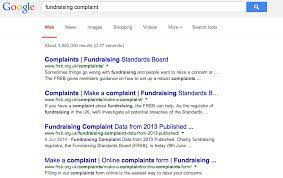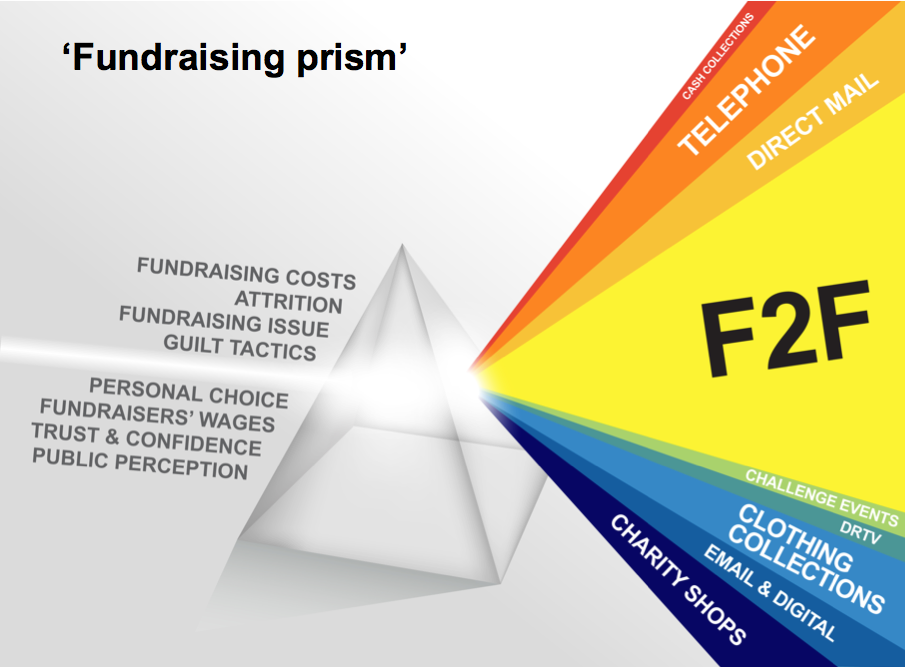Self-regulation – if it ain’t broke…
If you want to make a complaint about your energy supplier, any idea which body you should go to? I bet you said Ofgem. Wrong, it’s the Energy Ombudsman.
As the energy market regulator, Ofgem does advise energy companies on how to deal with and investigate complaints, but they don’t actually investigate complaints on behalf of consumers. They do, though, set price controls and ensure energy companies comply with relevant legislation and licences.
However, decisions about whether to take enforcement action for breaches are taken by Ofgem’s governing body the Gas and Electricity Markets Authority, although this power is delegated to the Ofgem executive.
Advertisement
Gosh it’s confusing, isn’t it? How can any poor member of the public ever get their head around this complicated regulatory regime?
Not that complicated
Well, it’s not really that complicated, is it? There is a body – Ofgem – that regulates the energy market.
There is a second body – Gas and Electricity Markets Authority – that makes decisions on enforcement action, but has delegated this power to Ofgem.
And there is a third body – Energy Ombudsman – that adjudicates against complaints.
“That self-regulation of fundraising is split between three organisations is a strength of this regime, not a weakness”
But how do you find the right one to make a complaint? It’s actually fairly simple. You type “energy complaint” into Google and the first result you get is for the Energy Ombudsman. Or you could go the Which? website and they’ll guide you through the process.
The point is, if you have a computer and a broadband connection, it’s not particularly taxing to find out who regulates energy markets and to whom to complain.
Unsurprisingly, it’s similarly easy to find out how you make a complaint about fundraising. Type “charity complaint” into Google and you’re directed to a page on the Charity Commission website telling you how to do it.
This page has a link to the Fundraising Standards Board if your complaint is specifically about fundraising. Even better, if you type in “fundraising complaint”, the first four links are to the FRSB – even typing “chuggers complaint” brings up the FRSB as the second entry.

I have genuinely never understood why people think that self-regulation of fundraising is confusing.
Most people are not the slightest bit interested in how fundraising is regulated. When they are, it’s usually because they want to make a complaint, and via the medium of a proprietary internet search engine (other search engines are available) that’s a very easy thing to do.
If however, a member of the public is sufficiently interested in regulation of fundraising, then they’ll do their research and find out the respective roles of the Charity Commission, Institute of Fundraising, Fundraising Standards Board and all the other organisations that play a part in regulating fundraising – the Public Fundraising Regulatory Association being just one.
Separation of powers
I find it especially puzzling why parliamentarians should think it confusing, since the fundraising self-regulatory regime loosely follows the separation of powers model on which all democratic government since the French Revolution is based.
The separation of powers dictates that separate bodies make laws (the legislature), enact laws (the executive) and adjudicate against breaches of laws (the judiciary) – often called the three estates of government.
The system has checks and balances built into it to ensure no one estate has too much power or influence (which is why the Press likes to think of itself as the ‘fourth estate’ keeping a watch on the other three estates – though of course it’s not too keen on these three imposing any checks and balances on the fourth estate).
So while of course it is not a direct analogy, in fundraising self-regulation, the IoF loosely takes the role of the legislature, the FRSB is the judiciary, and organisations such as the PFRA even more loosely take an executive position (before any political scientists contact me, I’ll stress again this is only a loose analogy).
“PwC’s report into self-regulation of fundraising contained an excellent recommendation – let it be”
That self-regulation is split between three organisations is a strength of this regime, not a weakness. It ensures that not only is self-regulation done, it is seen to be done. It means that the organisation that investigates breaches of the code of practice is not the same organisation that makes the code.
The FRSB – which is independent of the IoF – rarely upholds complaints against breaches of the IoF’s code of practice. We might speculate on the impact on public trust if these decisions not to uphold complaints were taken by an arm of the same institute that set the code in the first place.
Let it be
So that is why PwC’s report last week into self-regulation of fundraising contained an excellent recommendation – let it be.
While the report makes a number of sensible recommendations as to how the IoF, FRSB and PFRA could work better together and improve what they do “in their current form”, it says it does not believe that “immediate significant structural change would be beneficial to the organisations, self-regulation or the sector”.
The major decision from this report is not that at some point in the future the PFRA “could” become a department of the Institute, or that all three bodies should have a joint communications strategy. It’s that, by and large, the current regime should be left pretty much as it is… because it works.
[It seems pretty clear to me self-regulation of fundraising works and I’m not going to use up space justifying this assertion – but I’m more than happy to engage in the comments section with anyone (well, not everyone – you know who you are!) who wants to present an argument why self-regulation in its current form has failed.]
One of PwC’s recommendations, however, throws up an interesting question. The PwC report arose from Lord Hodgson’s review of the Charities Act 2006 that concluded that self-regulation of fundraising was confusing to the general public (as I’ve said, I don’t think it is – it’s relatively simple for members of the public to source information at the level they need).
PwC recommends the FRSB run a single public-facing “gateway” for fundraising self-regulation, with signposts to the websites of the IoF and PFRA as appropriate. This reflects the assumption that has taken hold following Lord Hodgson’s enquiry and his subsequent report that these three organisations comprise the entirety of fundraising regulation, and that once they rationalise how they present themselves to the public then suddenly self-regulation is sufficiently simplified for its entry in the Ladybird Book of Fundraising.
The fundraising ‘prism’
There is a tendency for people to view the practice of fundraising through a prism that splits any factor that applies to all fundraising into its component spectrum of different fundraising methods. As an example, consider the issue of fundraising costs. The ‘prism’ (and this is a metaphor only) splits this issue into the spectrum of the cost of major donor fundraising, cost of DM, cost of capital appeals, costs of volunteer management etc. But the most visible part of this spectrum is street F2F, so the overarching question of how much it costs charities to raise money becomes reduced to the single issue of ‘chugger agencies keep the first 12 months of your donation’.
Whatever the issue – attrition, guilt, fundraising costs, remuneration, standards – F2F is almost always the most visible part of the fundraising spectrum, meaning issues that should be examined in the context of the entire fundraising profession are played out on the ground (often battleground) of F2F.

And so it has become with fundraising regulation – which is now viewed through the spectrum of F2F. Lord Hodgson and the subsequent PwC report aren’t really saying that the regulation of fundraising is confusing and needs to be simplified, they are saying that the regulation of F2F is confusing and needs to be simplified.
Yet there are many more organisations involved in regulating fundraising, and handling complaints about fundraising, than just the three that took starring roles in the PwC report.
There is a massive amount of individuals fundraising that is regulated by an organisation other than the FRSB. Not only does the Advertising Standards Authority regulate charity advertising, its website states specifically that it regulates adverts that “refer to” fundraising – this covers TV, poster, direct mail and magazine advertising. To hammer the point home, ASA advises visitors to its website that if they have a complaint about “fundraising in general” – in other words, anything that doesn’t involve an advert, such as “street collections” – only then they should contact the FRSB.
It’s not just the ASA that plays some sort of role in regulating fundraising – all sorts of organisations such as the Telephone Preference Service and Information Commissioners Office do as well (see the list of organisation involved in fundraising regulation below – if I’ve missed any out, please let me know).
So the question is, if it’s confusing having three organisations involved in regulating F2F, how much more confusing is it having all these other organisations sticking their regulatory oar in as well?
The answer to that rhetorical question is not very much. Self-regulation of fundraising has not come crashing down because the ASA investigates and adjudicates on public complaints about charity fundraising adverts and the public don’t appear to be particular phased about directing such complaints to the ASA rather than FRSB.
No root and branch reform required
The regime we have in place works, it works well, and it really isn’t that complicated, certainly not more so than in the energy sector. The standards contained in the IoF Code of Practice are comprehensive. The FRSB’s adjudication process is robust and delivers the correct decisions in the tiny number of occasions it is required.
And with the strides made in co-regulation with councils, the PFRA has completely turned around, compared to five years ago, the niche area of fundraising that falls within its domain.
Self-regulation can be improved, sure, but it doesn’t need a root and branch review. And that’s what PwC has had the good sense to recognise. But if the time does come to radically review how fundraising is regulated, then we need to understand that there is more to regulation of fundraising than finding the right organisation to complain to if you think you’ve been guilt-tripped by a street fundraiser.
Alphabetical list of organisations involved in regulating fundraising in England and Wales
Advertising Standards Authority – regulates charity advertising and investigates complaints about charity advertising, including fundraising advertising.
Broadcast Advertising Clearance Centre – approves broadcast advertising prior to transmission.
Charity Commission – ultimate sector regulator with authority to investigate serious wrongdoing in a charity’s fundraising operation.
Cabinet Office – issues exemption certificates for certain charities conducting doorstep fundraising, negating the requirement for regulation by council licensing departments.
Council licensing departments – regulate cash collections in the street and all types of charity doorstep collections by issuing licences.
Council trading standards departments – regulate doorstep fundraising in relation to no cold calling stickers.
Fundraising Standards Board – adjudicates on complaints against the IoF Code of Practice.
Information Commissioner’s Office – regulates charities’ use of data and email marketing, with authority to levy fines for breaches of regulations.
Institute of Fundraising – develops and promotes the fundraising Code of Practice.
Mail Preference Service – maintains the ‘do not mail’ register.
PhonePayPlus – regulates premium rate SMS fundraising.
Public Fundraising Regulatory Association – regulates street and doorstep face-to-face fundraising.
Telephone Preference Service – maintains the ‘do not call’ register.
- What I really think about ‘chuggers’ by Ian MacQuillin (25 March 2014)
- REAL’s return to face to face fundraising (5 August 2020)
- BBC Word of Mouth features ‘chugger’ (10 May 2012)




